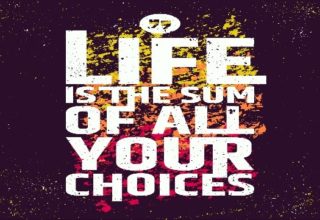Every day, we are faced with difficult thoughts and feelings that are uncomfortable. Whether it’s sadness, fear, shame, guilt, or anxiety, these feelings can take on a life of their own and feel overpowering. Soon enough, we may start to have other unpleasant feelings as a result of our struggle with the initial feeling. For example, we may feel frustration over the fact we are anxious, or guilt over the fact we are sad. That’s the problem with many of our feelings – the more that we struggle with having the feeling, the more the feeling takes hold of us.
What if there was an alternative? What if there’s a chance that these feelings are here because there is something that is meaningful, something that is so important we hurt because of it?
If struggling with the feelings isn’t working, the only other alternative we have is to create space to allow them to be present. Give this a try:
Take a few breaths. Notice how it feels when you breathe, and how the air feels as it flows in through your nose when you inhale, and how it feels when it exits when you exhale. Notice the speed of your breath, and how your rib cage moves slightly up as you inhale, and falls again when you exhale. Now see if you can locate the difficult feeling. Is it in your stomach? In your chest? In your heart? Your head? Notice where you feel it. Notice how big it feels – does it feel large and heavy, like it’s weighing you down? Does it feel small? Notice if it feels like it has any movement – is it pulsing, or vibrating? Is it still? If it had a colour, what colour would it be? What kind of texture would it have – would it be smooth, or spikey? See if you can create a picture of a creature for this feeling using these qualities.
You don’t have to like the creature or want it there, but see if you can allow it to just hang out. As ugly or undesirable as this creature may be, it is telling you that something is important. We hurt where we care, and this creature’s presence is a sign that something is very important to you. In other words, struggling with the creature is only struggling with an essential part of yourself. What’s more, struggling with the creature ties up energy and resources that you could be using to do things that bring you closer to the life you want.

So, next time you see the creature, see if you can hold it lightly. See if you can soften a little around it, and provide yourself with self-compassion like what you would feel for a friend experiencing the same thing. Notice that you are always larger than the creature. And maybe, it is okay to have this little creature along for the ride with you after all.
![]()




